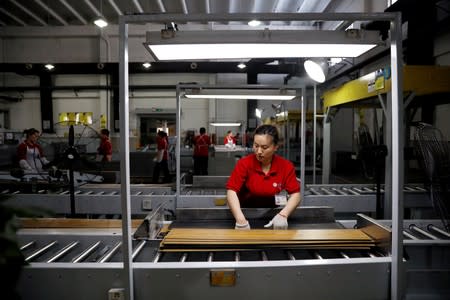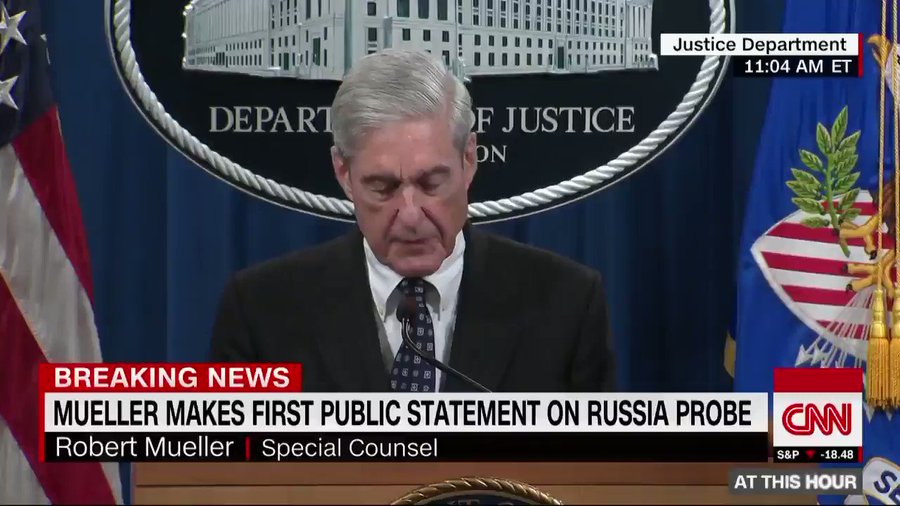Civil Eats
Can We Grow Enough Seaweed to Help Cows Fight Climate Change?
Research suggests that adding red seaweed to cattle feed makes then burp 60 percent less. Now, some scientists are asking what it would take to do it at scale.

Over the past few months, graduate students and researchers at California’s Moss Landing Marine Laboratories have scoured coastal waters, collecting seaweed in the hopes of finding a native species that could help gassy cows.
Cows belch—a lot. And their burps (as well as those of other ruminants) make them the top polluters of methane, a greenhouse gas that is 30 times more potent than carbon dioxide. As pressure to reduce heat-trapping gases in the atmosphere mounts, an increasing body of research has shown that seaweed added to cattle feed could dramatically reduce livestock’s impact.
The challenge: where will the enormous supply of seaweed—enough to impact millions of cows—come from? And at what cost?
Most scientists have focused on one red seaweed species—asparagopsis taxiformis—which thrives in tropical and sub-tropical climates. While asparagopsis can be found in Southern California, its habitat in the U.S. is relatively small since it’s a warm-water species. There are also concerns about it being invasive.
 Australis Aquaculture experiments with longline seaweed farming as a rotational crop to its barramundi operation in Van Phong Bay, Vietnam. (Photo courtesy of Australis Aquaculture)
Australis Aquaculture experiments with longline seaweed farming as a rotational crop to its barramundi operation in Van Phong Bay, Vietnam. (Photo courtesy of Australis Aquaculture)
The hope is that a native seaweed alternative can be found to allow for sustainable cultivation in California. Simultaneously, researchers are studying the local asparagopsis strains, to better understand their life cycle and how they could be safely cultivated at a large scale in on-land tanks or off the California coast.
Currently, the asparagopsis used for research is imported from Australia, Asia, and Europe. It is not cultivated or sold anywhere, so divers must be hired to pick it in the wild, making it expensive. If it were grown at scale for cattle to reduce emissions, it would cost less; most seaweed grown on ocean farms around the world is already quite cost-efficient.
“If we’re going to use seaweed to feed cows and do it on an impactful scale, there’s an interest in local sources, so we’re not sticking it on a boat, burning a bunch of fuel and bringing it to California,” said Jen Smith, an asociate professor at the University of California, San Diego, who studies asparagopsis native to the state. “We’re interested in growing it here.”
Cows’ Gassy Problem
Cows are, literally, a massive contributor to global warming. According to the Food and Agriculture Organization of the United Nations, the world has 1.468 billion head of cattle (compare that with 7.7 billion humans), with Brazil, India, China, and the U.S. raising the most cattle. As of January 2019, the U.S. had nearly 32 million beef cattle and just over 9 million dairy cows. (Calves don’t emit much methane because they are fed milk, or milk replacer, and have not yet developed a rumen.)
It’s no wonder the livestock sector contributes 14.5 percent of global greenhouse gas emissions—more than the entire global transportation sector. And when it comes to methane gas, livestock’s contribution is much bigger: 44 percent. Most of the methane produced by cows is a by-product of their digestion, known as enteric fermentation, a process during which microbes in the cow’s digestive tract decompose and ferment food. A smaller percentage of the methane comes from cows’ manure.
Manure digesters, large tanks that capture the methane biogas from manure and convert it into electricity, can curb some of these emissions. But there’s no way to collect cows’ burps into a tank. Researchers have tried to solve the problem for years by feeding cows things like oregano, tea leaves, citrus extract, and garlic. They also came up with a synthetic material called 3-nitrooxypropanol, or 3NOP. While some of these solutions show promise, their reductions in methane are modest.
The urgency to find a solution picked up in 2016 when California passed a landmark bill that mandates a 40 percent reduction in methane emissions by 2030. The state’s biggest contributors of methane gas are its 1.7 million dairy cows and 650,000 beef cows.
That same year, a researcher in Australia published a study showing near-complete reductions of methane in the burps of cows that were fed minute amounts of seaweed—specifically, asparagopsis taxiformis at 2 or more percent of the total feed. The study was done using rumen fluid in the lab, not on live animals.
The findings spurred significant interest. Researchers around the world are now aiming to replicate those results, including at the University of California, Davis where Ermias Kebreab is conducting trials on live animals. Kebreab, associate dean for global engagement in the College of Agricultural and Environmental Sciences, said initial results showed a 60 percent reduction in feed containing just 1 percent asparagopsis. The study was done using a weaker strain of the seaweed, so more of it had to be fed to the cows, he said.
Kebreab is now conducting a six-month live trial with a stronger strain to see if the reductions in methane emissions will stick over time. The study will also determine whether the seaweed will negatively impact cows’ digestion or the taste of milk and meat (he said it hasn’t so far).
Searching for a Native Seaweed Alternative
California’s dairy industry says it’s open to solutions to reduce cattle’s methane load, but some farmers are hesitant about the seaweed. Michael Boccadoro, executive director of the trade association Dairy Cares—a project of the California Dairy Research Foundation, which is funded by dairy checkoff dollars—said the primary concerns are cost and whether the marine algae can be sustainably grown in the quantities needed.
“A lot of us wonder how to get the price down to something that’s economically feasible. And how to get enough supply, and not just for California cattle. It has to be done globally if you want to make a dent,” said Boccadoro. “We’re a little skeptical that this is a sustainable option.”
The dairy industry is also concerned about the health effects of feeding seaweed to cows long term, Boccadoro said. Bromoform, the compound in seaweed that’s responsible for methane reduction (along with some other compounds), has been classified as a probable human carcinogen by the U.S. EPA, and its synthetic form is banned for animal use. According to Kebreab, the U.C. Davis researcher, the bromoform in seaweed does no harm because its concentration is very low. Humans have eaten seaweeds for tens of thousands of years. In fact, asparagopsis is known as limu kohu in Hawaii, where it’s an ingredient in poke, the popular raw fish dish. But Boccadoro said it remains to be seen whether consumers accept the idea of feeding it to cows.
Even if the seaweed proves to be a panacea, shipping it from out of the country should be avoided, said Dr. Luke Gardner, a California Sea Grant Extension Specialist based at the Moss Landing laboratories. Gardner is hoping to find a native California seaweed with properties similar to asparagopsis.
 Luke Gardner, at the tanks where wild harvested seaweed is cultivated. (Photo courtesy of California Sea Grant)
Luke Gardner, at the tanks where wild harvested seaweed is cultivated. (Photo courtesy of California Sea Grant)
In recent weeks, he has been overseeing the collecting of native seaweed samples. Next month, he’ll freeze-dry and ship them to a U.S. Department of Agriculture (USDA) research lab in Oklahoma. His USDA collaborator will then test the seaweed and come up with a short list of species that show promise for methane reduction.
From the shortlist, Gardner will choose several species that are most amenable to aquaculture. Seaweed has a complicated life cycle, Gardner said, so it’s not easy to culture. Some species, for example, might have the ability to reduce methane, but grow too slowly to be farmed.
Of the chosen native seaweed, Gardner will grow several pounds of each and will again ship them out, this time to a USDA researcher in Wisconsin who will conduct a 10-week live animal trial. He’ll feed cows different levels of the seaweeds and will measure the resulting methane so as to determine which is most potent.
Jump-Starting California’s Seaweed Farming
The current wild supply won’t provide enough supply to counteract the methane cows release. To do that, it must be farmed, which hasn’t yet been done. Gardner said it’s important to look for a native seaweed that can be grown at scale in the U.S. Doing so would help not just the climate, but it’s also a nascent industry, Gardner said. “We hope to kickstart seaweed aquaculture on the West Coast,” he said. “There’s a lot of interest in it and (growing seaweed for cattle feed) would give it a real market.”
The vast majority of seaweed farming today takes place in the ocean in a handful of Asian nations, headed by China. In the U.S., many bureaucratic and cultural hurdles keep seaweed aquaculture from becoming a mainstay. (A few kelp farms do exist in Maine and Connecticut, but they are the exception.) California, in particular, has a very complex permitting process. Only one off-shore commercial aquaculture farm, Catalina Sea Ranch, has been permitted thus far in federal waters off the southern coast. Its main crop is mussels, but it’s also experimenting with kelp.
Members of the state’s Native American communities have raised alarms about expanding seaweed cultivation and harvesting before, noting the sacred role seaweed plays in their cultures and the other recent examples of others overharvesting foods that are important to indigenous communities, as has happened with abalone populations on Northern California’s coast.
To Gardner, allowing seaweed aquaculture in the state is a no-brainer. Growing it locally is economically advantageous. The average cow eats 10,000 pounds of dry matter forage per year. So the state would need about 140,000 dry tons of the seaweed per year to add just 1 percent of it to cows’ diet. Shipping the stuff from Asia might increase the price-tag. “In order to get the industry to take this on, it should not affect their bottom line,” Gardner said.
 Moss Landing Marine Laboratories graduate student Katherine Neylan collecting native seaweed samples. (Photo courtesy of California Sea Grant)
Moss Landing Marine Laboratories graduate student Katherine Neylan collecting native seaweed samples. (Photo courtesy of California Sea Grant)
Seaweed farming is also low-impact, Gardner added. Unlike other seafood, it doesn’t require any feed. And it cleans the water by capturing nutrients that cause harmful algae blooms. Though there’s also potential for negative impacts, Gardner admits. There may be a disease lurking in seaweed that grows in the wild, which could manifest once seaweed is grown in denser, larger populations.
To overcome these challenges, the researcher at the U.C. San Diego envision initially growing seaweed in tanks. Smith is studying the asparagopsis taxiformis found locally, looking at how manipulating temperature, light, and nutrient concentration affects growth rate. “We want to grow it as quickly and efficiently as possible,” Smith said.
Smith’s team is working to develop a living library of the native asparagopsis strains and running experiments in the lab to find the optimal one. “We might be able to find a strain that grows fast, is tolerant to environmental conditions, and produces the most bromoform,” Smith said. She is also trying to increase the marine algae’s concentration of bromoform by manipulating nitrogen and phosphorous, which would allow the cows to consume less of the seaweed.
A land-based system of tanks would minimize environmental impacts and allow for better control of the fragile algae, Smith said. In particular, researchers could optimize a growing phase during which the seaweed reproduces through fragmentation, meaning it could be cut it into pieces that each grow into a full plant. Growing in tanks also means no worries about pests, predators, storms, swells, or other dangers.
“If we can optimize growth rates, all you need is access to sunlight and clean seawater and tanks,” said Smith. “You can have much more control.”
However, Josh Goldman, the founder of Australis Aquaculture, says growing seaweed in the ocean is more cost efficient and effective. For the past year and half, Goldman’s company—which farms barramundi in Massachusetts and Vietnam—has been working on a project called Greener Grazing. Its goal is to cultivate asparagopsis in the ocean (the entire life cycle of the seaweed hasn’t yet been replicated in captivity).
 Greener Grazing team member Dr. Leonardo Mata examines a strain of Asparagopsis taxiformis red seaweed closely under microscope. (Photo courtesy of Australis Aquaculture)
Greener Grazing team member Dr. Leonardo Mata examines a strain of Asparagopsis taxiformis red seaweed closely under microscope. (Photo courtesy of Australis Aquaculture)
Funded by both philanthropic and private investors, the company has built a pilot farm in Vietnam. It’s working on producing seaweed spores which can then be attached to ropes or nets in the ocean. Greener Grazing has also created a seed bank of different seaweed strains that grow in different environments and climates. Once the company figures out how to reproduce the seaweed, Goldman said, it hopes to share the expertise with others around the world.
“There aren’t many opportunities to move the needle on climate change in a short time,” said Goldman. “That’s why this is so exciting.”









/cdn.vox-cdn.com/uploads/chorus_image/image/63886891/IMG_5076.0.jpg)
:no_upscale()/cdn.vox-cdn.com/uploads/chorus_asset/file/16295287/Trump_Rose_Garden_Temper_Tantrum.jpg)